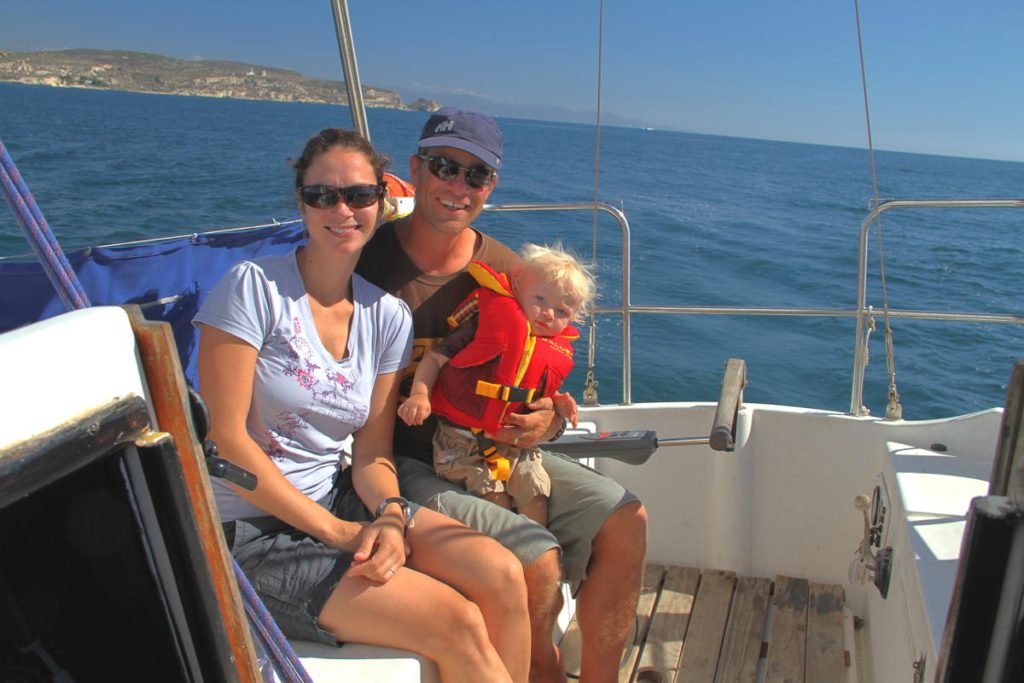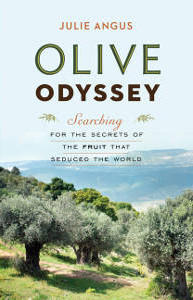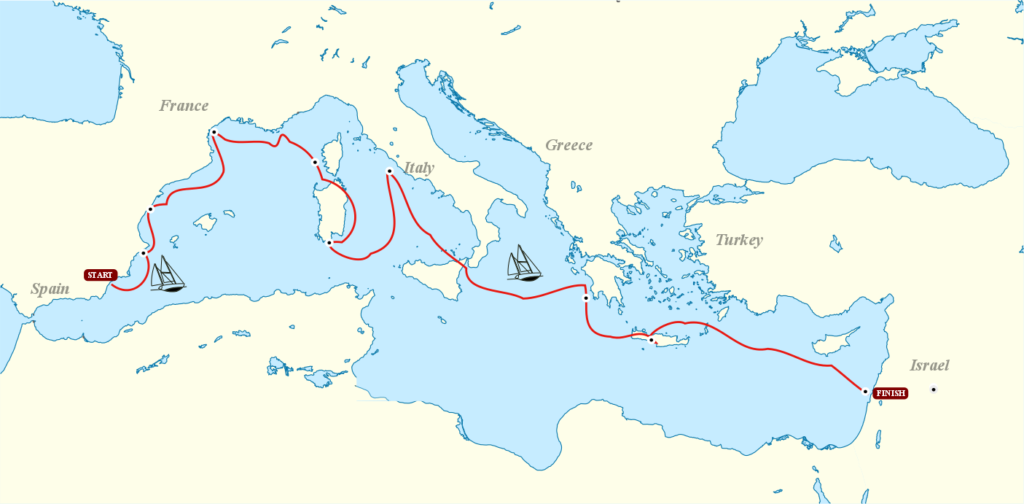
Julie, Colin and their son Leif sailing on the Mediterranean exploring the history of the olive tree.
Olive Odyssey was a quest to expose the secrets of the world’s most influential fruit. How did the olive tree spread throughout the Mediterranean and influence the world? How could greedy olive oil companies kill more than 1000 people? Why do Sardinians, who consume vast quantities of olive oil, have more centenarians than anywhere else?
Our team travelled by sailboat and overland from Spain to the Middle East, retracing the trading routes of early seafaring merchants to explore the lands sculpted by the olive tree and uncover how the olive first came to those shores. Working in partnership with National Geographic, Canadian Arts & Research programs and an Italian University we sampled ancient olive trees throughout the Mediterranean and conducted DNA analysis to help understand the history of the olive tree. We examined the cultural, culinary and historical importance of the olive tree to the lands in grows in, tasting delicious foods, examining ancient artifacts and speaking with renowned experts.
Julie documented the journey in the book Olive Odyssey – Searching for the Secrets of the Fruit that Seduced the World, which was published in Canada and the USA by Greystone in 2014. It received rave reviews from the Wall Street Journal to The Vancouver Sun. “Angus’s book, which sparkles with the sights, smells, tastes and stories of the Mediterranean olive, is as informative as it is infectious, ” said Library Journal.















